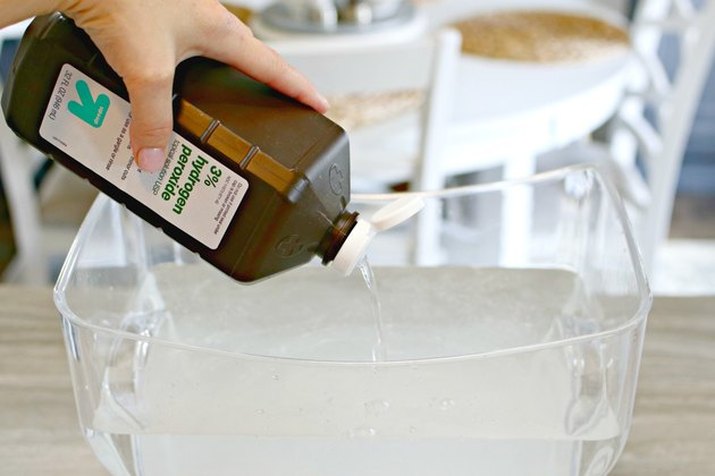
Hydrogen peroxide has a longstanding place in home bathrooms, both as an antiseptic for minor scrapes and cuts — which doctors no longer recommend, by the way — and as an oral rinse for whiter teeth and fresher breath. Peroxide has a large number of uses beyond those, and after reading these ideas, you may decide you'll need to keep several bottles around the house.
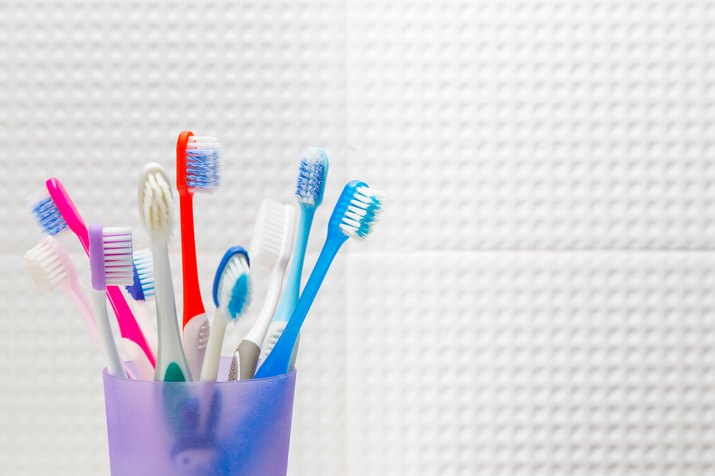
Disinfect Personal Items
Hydrogen peroxide's potent antibacterial and antifungal action makes it a powerful partner in the realm of personal hygiene. The very things we use to clean ourselves are often riddled with bacteria, and peroxide can put a stop to that in a hurry. Use it to disinfect and sanitize your toothbrush, makeup brushes, eyelash combs or anything else that comes into intimate contact with your body and especially membranes like those in your mouth, nose and eyes.
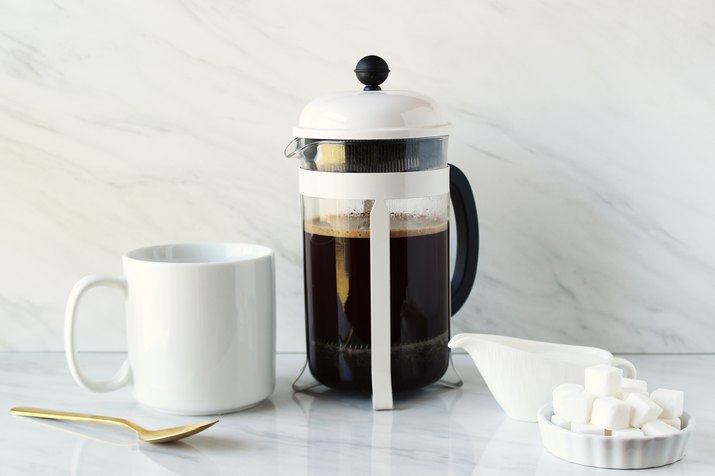
Prevent Marble From Staining
If you fell in love with your current kitchen because of its oh-so-stylish marble countertops, discovering how easily marble stains may have been a nasty shock. Small spills of coffee or tea, food, wine or even water can cause stains that sink into the porous stone permanently. As soon as you see the stain, make a paste of peroxide and either flour or cornstarch, and spread it liberally over the spot. Cover it with a plastic bag or stretch wrap to keep it moist overnight, then clean up the peroxide paste in the morning. Repeat, if necessary, until the stain's gone (and then seal your countertop, to protect it in the future).

Whiten Grout
When done well, tile makes an especially elegant surface for bathrooms, floors and kitchen backsplashes. Unfortunately, where there's tile there's also grout, and nothing ruins the look of your tile faster than grubby, dirty grout. Scrubbing it by hand is tedious drudgery, so take a shortcut. Instead, pour the peroxide straight onto the grout or make a paste of peroxide and baking soda. Leave it to sit for 30 minutes to an hour, then wash it off and repeat as needed. In the end, you should only have to scrub the really stubborn spots.
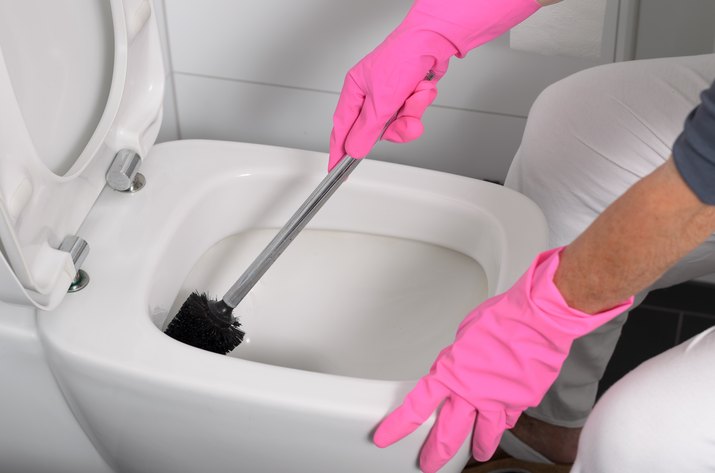
Clean and Disinfect the Toilet Bowl
The toilet is the most obvious place in your house where bacteria and bad smells can accumulate. There are plenty of commercial cleaning products to deal with that, but many of them contain harsh chemicals and release nostril-searing odors. If you're sensitive to scents, or just want to use something gentler and more natural, pour peroxide into the bowl instead and give it a good swish around the inside of the bowl. Wait a half-hour, then come back and scrub it as usual with a brush. It'll be fresh and clean, without that overwhelming fragrant smell.

Brighten & Whiten Laundry
Peroxide is well known as a hair bleach, and it works pretty well for bleaching clothing too. A cup of peroxide in with your whites will bleach just as well as commercial chlorine bleach, and leave them fresh. It's also a useful stain remover. Apply peroxide directly to a blood stain, and blot it up once it stops fizzing. For other tough stains like wine, grass or the dreaded yellowed armpits, use two parts peroxide to one part dish soap and scrub them with a soft brush. Rinse, then repeat if necessary, until the stain is gone. Once you're satisfied with the result, wash the clothes normally. Peroxide isn't color safe, so only use it for stains on white or very light clothing.

Disinfect Your Kitchen
Peroxide is just as adept at killing germs in the kitchen, so think seriously about pouring some into a spray bottle (or just putting a spray nozzle on your peroxide bottle) and keeping one on your counter. Spritz your cutting boards after they're washed to disinfect them, and do the same to your counters after you wipe them down with a soapy cloth. Peroxide kills mold, too, so you can use it to clean around problem areas under your sink or around your windows.
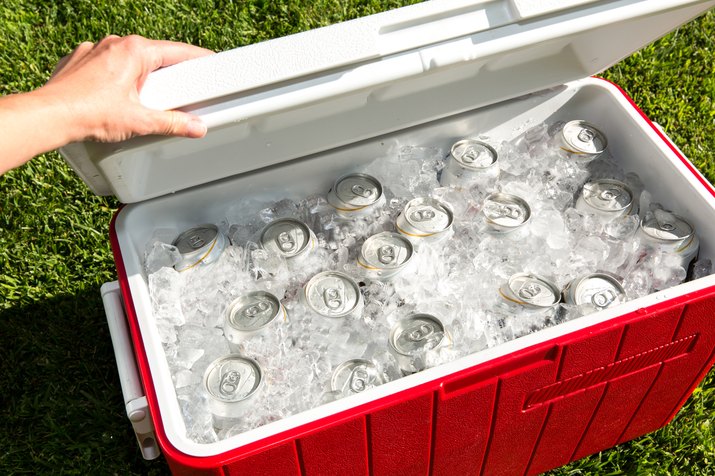
Cope With "Cooler Funk"
If you spend a lot of time outdoors, your picnic cooler probably gets a workout. They're a truly great invention, keeping food for your lunch (and possibly tomorrow's breakfast) safe until you want it. Unfortunately, after a long winter spent in storage, your cooler might not smell like anything you want to keep food in. To fix that, spray it thoroughly with peroxide and prop the lid open. Wipe it out again after a few minutes, and repeat until it smells fresh. Spraying the cooler with peroxide before it goes into storage can help prevent mold and fungal growth as well, and keep that distinctive funk from developing.

Disinfect Reusable Shopping Bags
Reusable shopping bags are a great idea, and depending on the kind you buy, they can dramatically help reduce the environmental impact of your shopping. Over time, though, drips, dribbles and just plain old dirt can build up in your bags and make them a potential source of contamination for your groceries. Some bags can go straight into the washing machine, which solves the problem neatly. For the rest, spraying them well with peroxide and then wiping them out with a clean cloth can help them stay usable for longer.

Sanitize Kids' Toys
Small children are pretty predictable: Anything they can get a grip on eventually finds its way into their mouths. That's a definite problem during cold and flu season, and bacteria in general are a threat all year round. Be proactive by regularly using peroxide to wipe down toys, teething rings and anything else the little ones gnaw on. Don't forget things like crib rails, the edges of low furniture and patio windows. If you've seen their mouth on it even once, it's worth giving it a spritz of peroxide.
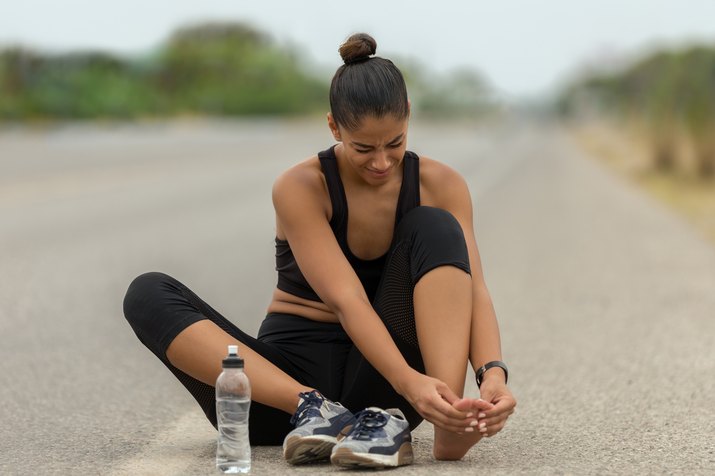
Wrestle With Athlete's Foot
Hydrogen peroxide is a powerful anti-fungal, which means it's your best friend if you're coping with the irritating foot fungus known as "athlete's foot." Dilute the peroxide with an equal quantity of warm water, and soak your feet once or twice daily until the infection surrenders and goes away. To avoid re-infecting yourself, spray the inside of your running shoes with the same mixture, and use it to disinfect your shower and bathroom floor as well.
Advertisement
Video of the Day